As we embark on a future powered by innovation, have you considered the transformative role of automation in manufacturing? Industries are positioned at the brink of continual advancements, highlighting the importance of a detailed industrial automation guide. This guide, pivotal for 2025, dives into the key strategies of manufacturing automation and how to automate industrial processes. It showcases the proactive use of automated machinery.
Given the rise in global competition, automation has become a necessity for businesses, not just an added benefit. The adoption of robotics and automation technologies extends beyond simple tasks. It addresses complex challenges and bridges the skills gap that 75 percent of manufacturers face. Recognizing the critical influence of automation signifies a strategic move towards future preparedness.
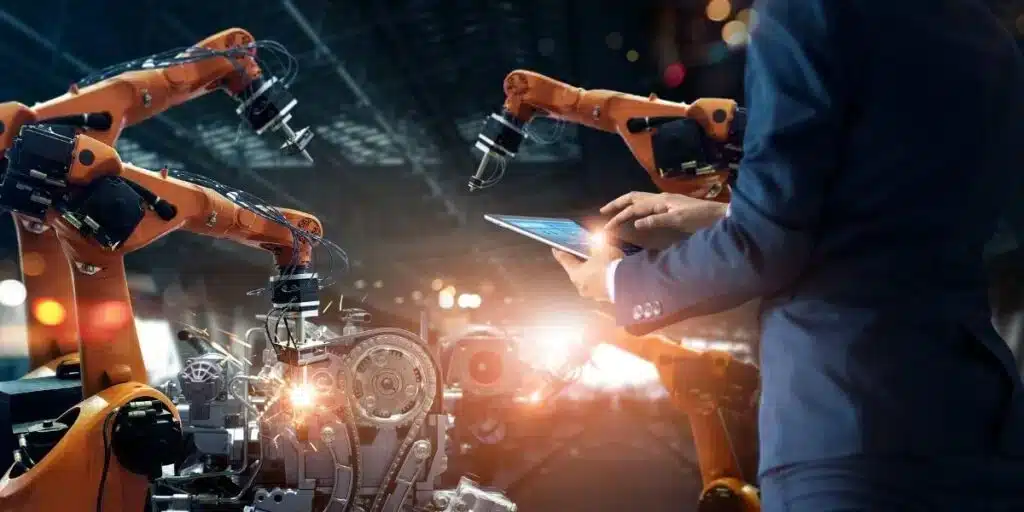
The development of this guide was thorough, shedding light on the manifold advantages tied to tangible data. With RPA expected to save companies up to $7 trillion by 2025 and the robotics market expanding rapidly, the need for factories to modernize is pressing. This guide outlines a roadmap characterized by precision, efficiency, and innovation. It equips your manufacturing operations with the essential tools for achievement.
Key Takeaways
Understanding the transformative impact of automation technology on manufacturing efficiency.
Insights on overcoming skills shortages through the strategic application of automated machinery.
The importance of clear objectives and process documentation in successful automation implementation.
Analysis of the rapid growth within the robotics sector and emerging innovation in AGV and AMR technologies.
Exploring the economic benefits forecasted for companies embracing robotics process automation (RPA).
Effectively involving stakeholders and leveraging process design strategies for optimal automation integration.
Delineating the increasing importance of interoperability among robots in advanced manufacturing settings.
Understanding the role of industrial automation tools in customizing and integrating control systems.
What is Industrial Automation?
Industrial automation refers to the use of control systems, such as computers or robots, and information technologies to handle different processes and machinery in an industry, effectively replacing human intervention. This advancement marks a significant step beyond mechanization, where human labor is supplemented by machines, to a more sophisticated level where machines operate autonomously.
The primary goal of industrial automation is to enhance efficiency, productivity, and quality across various industries. By automating repetitive and complex tasks, businesses can achieve higher precision, reduce operational costs, and minimize human error. This transformation is pivotal in sectors ranging from manufacturing and automotive to pharmaceuticals and food processing.
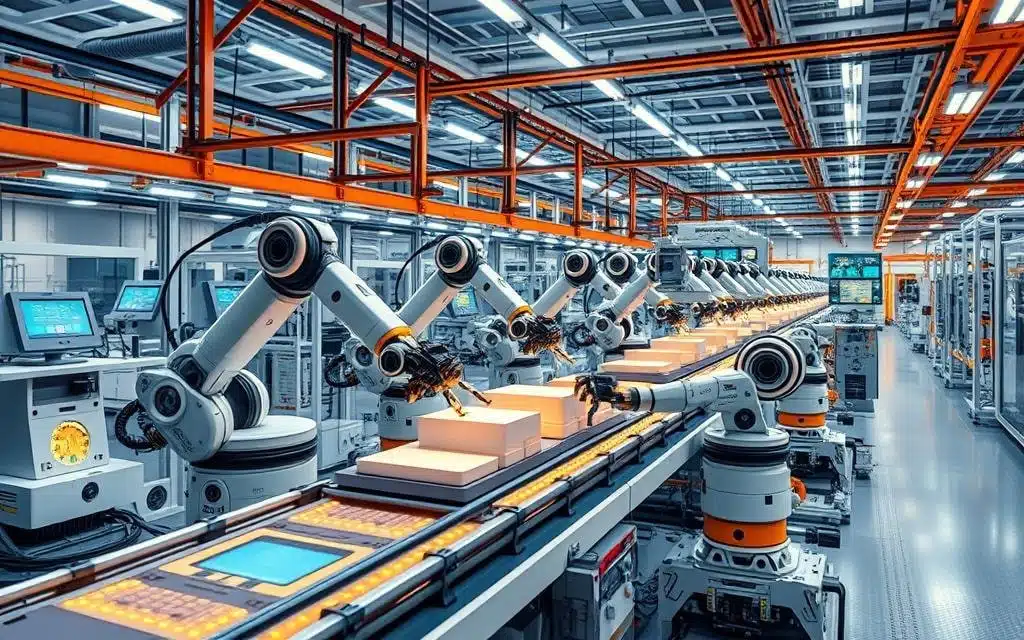
Industrial automation encompasses a wide array of technologies, including programmable logic controllers (PLCs), human-machine interfaces (HMIs), and supervisory control and data acquisition (SCADA) systems. These technologies work in unison to streamline industrial processes, ensuring seamless operation and real-time monitoring.
In essence, industrial automation is the backbone of modern manufacturing, driving innovation and competitiveness in a rapidly evolving market. It enables industries to meet the growing demands for high-quality products while maintaining cost-effectiveness and operational efficiency.
The Evolution & Strategic Importance of Industrial Automation
Manufacturing’s landscape has seen a dramatic shift towards automated systems. This evolution is propelled by industrial robotics, PLC programming, and factory automation solutions. Delving into Industry 4.0 trends uncovers the growing significance of automation. It’s reshaping productivity, efficiency, and global market competitiveness.
Understanding the Transformation from Manual to Automated Processes
Automation’s journey from manual labor has been marked by groundbreaking technological advancements. From the First to the Second Industrial Revolutions, industries have gradually embraced technologies. These range from simple mechanical aids to complex digital systems. Today, PLC programming and robotics are crucial to modern manufacturing, driving factory automation.
Assessing the Benefits of Automation in Modern Manufacturing
Powered by robotics and digital technologies, industrial automation offers major benefits. These include a drastic decrease in machine downtime and notable increases in throughput and labor productivity. Automation also leads to higher output quality and cost efficiency, essential for competitive advantage in today’s market.
Case Studies: Success Stories of Automation Integration
Real-world applications of industrial automation demonstrate its transformative impact. Companies integrating advanced robotics and PLC systems have seen up to a 50% reduction in downtime and a 30% increase in throughput. These outcomes not only showcase the efficacy of factory automation solutions but also highlight Industry 4.0 trends in fostering sustainable growth.
Exploring modern industry challenges, automation’s evolution reflects human creativity and efficiency pursuit. Our case studies show that integrating these systems enhances human efforts with robotic precision and smart analytics.
As pioneers in industrial automation, we aim to shape manufacturing’s future. The move towards smarter, efficient systems is crucial for thriving in a tech-driven world. Adopting these innovations is key for any firm aiming to excel through industry 4.0 trends.
| Year | Industrial Robots in Operation | Growth Rate |
|---|---|---|
| 1997 | 700,000 | N/A |
| 2014 | 1.5 million | Approx. 14% per year |
| 2020 | 3 million | Approx. 14% per year |
Types of Industrial Automation Systems
Industrial automation systems can be categorized into several types based on their flexibility and adaptability. Understanding these different types is crucial for selecting the most suitable solution for specific applications or industries.
Fixed (Hard) Automation
Fixed automation, also known as hard automation, involves the use of specialized equipment designed to perform a specific set of tasks in a predetermined sequence. This type of automation is ideal for high-volume production processes where the product design remains relatively unchanged over time. Examples include automobile assembly lines and bottling plants.
The primary advantage of fixed automation is its ability to achieve high production rates and low unit costs due to the optimized and repetitive nature of the process. However, this comes at the expense of flexibility. Any changes to the product design or production process require significant time and financial investment to reconfigure the machinery.
Fixed automation is best suited for industries where the demand for a particular product is consistent and high, making the initial high costs of specialized equipment justifiable.
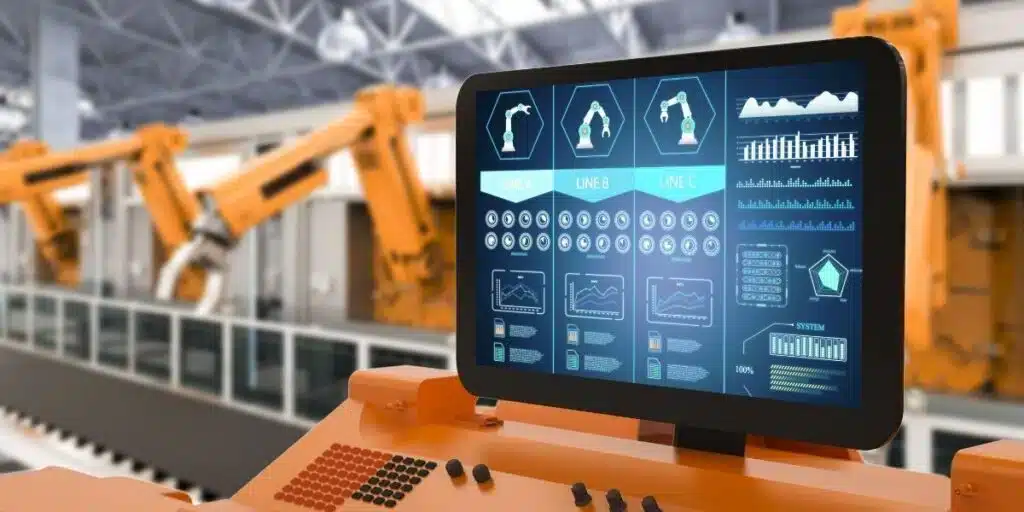
Programmable Automation
Programmable automation offers a higher degree of flexibility compared to fixed automation. In this system, production equipment can be reprogrammed to accommodate different product configurations. This is achieved by changing the sequence of operations through software programs.
Commonly used in batch production processes, such as machining and robotic assembly, programmable automation allows manufacturers to produce a variety of products using the same equipment. This flexibility is particularly beneficial in industries where product designs change frequently or where there is a need to produce small to medium-sized batches.
While programmable automation provides greater adaptability, it typically results in lower production rates and higher unit costs compared to fixed automation. Additionally, skilled personnel are required to develop and maintain the programs that control the machinery.
Flexible (Soft) Automation
Flexible automation, also known as soft automation, represents the pinnacle of adaptability in industrial processes. This system allows for rapid reconfiguration of production equipment to handle a wide range of products. It relies on programmable machinery and advanced control systems to manage complex sequences of operations.
Flexible automation is particularly advantageous in industries with unpredictable demand and short product life cycles, such as flexible manufacturing and robotic assembly. The key benefit of this system is its ability to quickly respond to market changes. Manufacturers can easily switch between different products by simply adjusting the program, ensuring minimal downtime and maximum efficiency.
This type of automation is ideal for environments where product variety and customization are essential. It enables manufacturers to stay competitive by quickly adapting to new market trends and customer demands.
By understanding the different types of industrial automation systems, businesses can make informed decisions about which system best suits their needs. Whether it’s the high efficiency of fixed automation, the adaptability of programmable automation, or the versatility of flexible automation, each type offers unique advantages that can drive productivity and innovation in various industrial processes.
A Comprehensive Overview of Automation Technologies
In the manufacturing and production sector, the adoption of automation technology has transformed operational methods. The core of this change lies in industrial control systems and SCADA frameworks, crucial for smart factories. These technologies boost efficiency and enable industries to scale and adapt more effectively.
A critical component in these systems is the human machine interface (HMI), which facilitates interaction between humans and machines.
The journey of these systems began with Henry Ford’s assembly line in 1913. The field of industrial automation has significantly evolved since. The mid-20th century saw the introduction of Computer Numerical Control (CNC) systems. This period also marked the rise of microprocessors and Programmable Logic Controllers (PLCs), ushering in the era of advanced industrial automation systems. Learn more about this progression. The drive to enhance production through advanced technologies signals a move towards dynamic, interconnected manufacturing settings.

The role of SCADA and PLCs in today’s industrial landscape is foundational. These automation elements are key to improving decision-making, precision, and productivity. Specifically, SCADA systems facilitate real-time data collection and analysis. This provides valuable insights for operational decisions in smart factories.
| Year | Technological Advancement | Impact on Industrial Automation |
|---|---|---|
| 1913 | Introduction of the assembly line | Standardized mass production |
| 1950s-1960s | Emergence of CNC systems | Integration of computers enhancing operation precision |
| 1970s | Adoption of microprocessors and PLCs | Increased automation and process control in manufacturing |
| 1980s-1990s | Rise of robotics in automation | Enhanced roles in welding, assembling, and painting |
| 21st Century | Advancement in IoT, AI | Birth of Industry 4.0 with interconnected systems |
The global industrial automation market is set to expand significantly, reaching $395.09 billion by 2029. The adoption of these technologies is crucial. They do not only drive economic growth but also encourage sustainable practices in the industry, vital for today’s rapid industrial evolution.
Shifting to smart factories involves more than just modernizing old systems. It’s about integrating intelligent industrial control systems that can foresee, adapt to, and manage changes efficiently. With SCADA and similar technologies, industries are equipped to meet current demands. They ensure resilience and maintain a competitive edge in the global marketplace.
Industrial Robotics: Shaping the Future of Manufacturing
Robotics have transformed the manufacturing world, elevating efficiency and consistency in production. Key to this shift are systems like AGVs and AMRs. They are now core to advanced manufacturing automation techniques.
The Global Rise of Robotic Systems in Industry
Robotics symbolize not merely technological progress but a worldwide shift in industry. As they become more affordable and accessible, firms globally are adopting robots to boost efficiency and stay competitive. This trend is empowered by the dropping costs of robots, allowing even small businesses to tap into these technologies.
Types of Robots: AGVs, AMRs, and Beyond
Different robots perform distinct roles in industry. AGVs streamline material transport, cutting down on manual tasks in logistics. Meanwhile, AMRs navigate complex environments, syncing safely with human employees. This transition to AMRs reflects the push for dynamic, adaptable manufacturing operations.
Implementation and Impact of Advanced Robotics Systems
Adopting cutting-edge robots in manufacturing elevates production power and reinforces safety. These machines deliver pinpoint accuracy, significantly minimizing mistakes. With robots working alongside humans, industries see a spike in productivity and workplace safety.
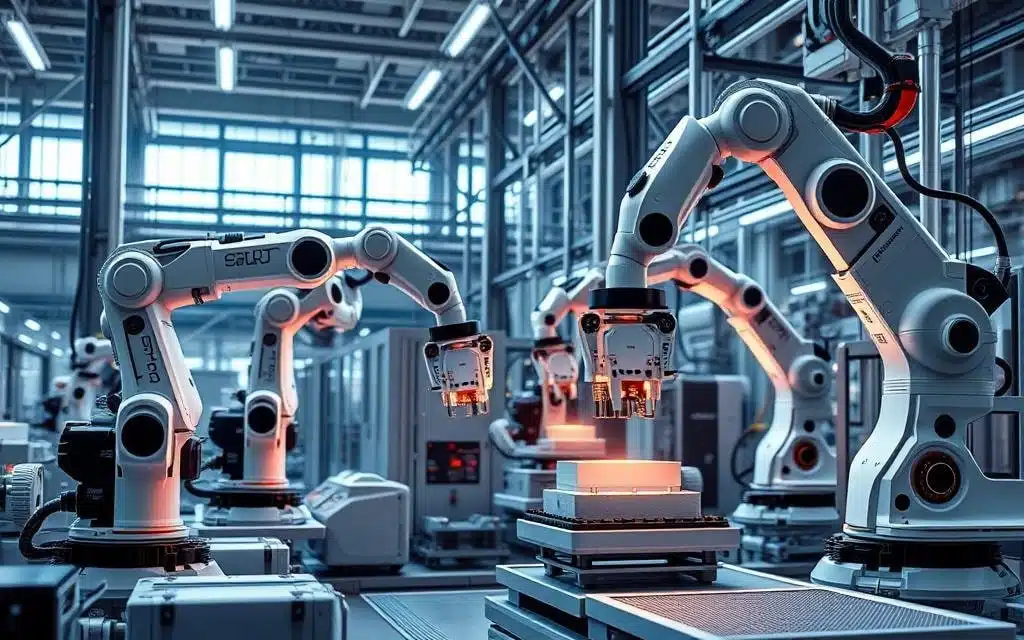
Increased productivity and efficiency through automating repetitive tasks.
Enhanced precision and quality control, leading to fewer product defects.
Improved safety in the workplace by delegating hazardous tasks to robotic systems.
Economic scalability facilitating easier adaptation to demand fluctuations.
Yet, the shift to automation brings hurdles:
Substantial upfront and ongoing costs.
Jobs at risk, necessitating employee retraining.
Challenges merging robots with current operational flows.
| Year | Development | Impact |
|---|---|---|
| 1961 | Introduction of Unimate in GM’s assembly line | Sparked the modern robotics movement in manufacturing |
| 1980s | Emergence of programmable robots | Expanded the complexity and types of tasks that could be automated |
| 2000s | Rise of collaborative robots (cobots) | Enabled safer and more versatile human-robot collaborations |
To sum up, despite the steep initial costs and need for new strategies, robotic systems offer vast gains in efficiency, accuracy, and adaptability, proving themselves as vital in today’s manufacturing sphere.
PLC Programming & Its Role in Factory Automation
PLC programming serves as a pivotal element in factory automation, utilizing industrial automation tools to enhance control systems. It embodies key aspects of automated machinery. Its role is highlighted in the industrial automation guide, showcasing its indispensable nature. PLC programming ensures automated machinery operates smoothly, aiding engineers and technicians in improving manufacturing efficiencies.
Industries from food processing to automotive assembly depend on PLC systems. A PLC system’s core includes input-output modules and a central unit for a range of tasks. Notably, brands like Allen Bradley and Siemens lead with PLCs designed for rapid and complex operations, which are vital for high-speed manufacturing.
Understanding PLC programming begins with its lifecycle. This spans from defining control tasks, analyzing system needs, to testing and deployment. Programming languages like Ladder Logic and Structured Text are fundamental, allowing for the implementation of intricate control logic.
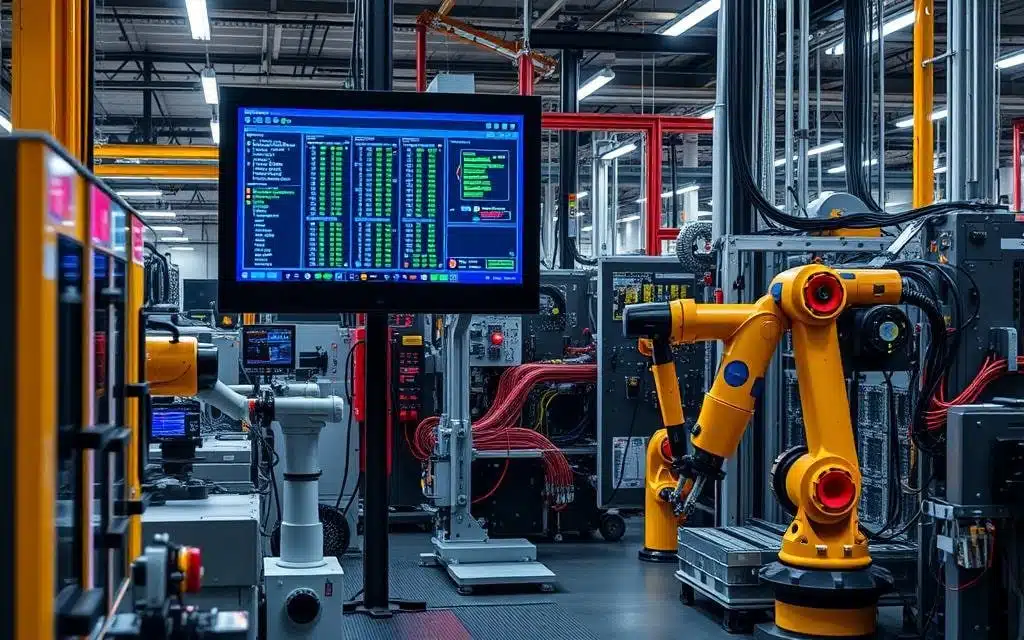
| Programming Languages | Key Functions | Industry Application |
|---|---|---|
| Ladder Logic | Timing, Counting | Manufacturing |
| Function Block Diagrams (FBD) | Arithmetic Operations | Automotive |
| Structured Text (ST) | Complex Algorithm Implementation | Pharmaceuticals |
Mastery in PLC programming requires hands-on experience and continuous learning. Certifications and understanding contemporary trends, as our industrial automation guide suggests, are crucial. Safety protocols, including standards compliance and emergency features, are fundamental for operational integrity.
Unitronics has been significant in evolving PLC applications by merging intuitive interfaces with solid control features. This progress boosts efficiency, establishing PLC programming as central to modern industrial automation’s success.
Industrial Control Systems: Ensuring Precision and Efficiency
Industrial control systems are pivotal at the core of modern manufacturing. They are essential for precision, reducing downtime, and improving efficiency. Embedded in our industrial automation guide, these systems extend robust solutions across numerous sectors.
Overview of Control System Architecture
The landscape of industrial control systems includes diverse configurations, each designed for specific needs. At their heart, SCADA (Supervisory Control and Data Acquisition) systems, DCS (Distributed Control Systems), and Programmable Logic Controllers (PLCs) play crucial roles. Together, they enable smooth process automation and impeccable control.
SCADA Systems: Real-time Data for Decision Making
SCADA systems stand out in industrial automation. They deliver real-time data essential for timely, informed decision-making, boosting productivity and efficiency. With SCADA, industries gain unparalleled oversight over remote field devices. This enhances operational optimization and slashes response times significantly.
DCS vs. PLC: Choosing the Right Control System
The choice between a DCS and a PLC can deeply influence an industrial control system’s effectiveness and adaptability. DCS systems offer thorough control for intricate, layered processes. In contrast, PLCs shine in smaller, scalable applications with their robustness. Pinpointing your operation’s unique requirements, as detailed in our automation guide, is vital for selecting an apt system.
| Feature | DCS | PLC |
|---|---|---|
| Control Type | Comprehensive, integrated | Modular, scalable |
| Best Suited For | Complex processes | Smaller, flexible applications |
| Main Advantage | System stability | Cost efficiency and adaptability |

The Advantages of Automated Machinery in Production
In today’s market, industries aim for peak efficiency and productivity. The importance of automated machinery has grown significantly. These systems streamline workflow and greatly improve industrial control systems. By integrating advanced factory automation solutions, production floors worldwide undergo transformative changes. This aligns with business growth and scalability.
Automation’s demand spikes in manufacturing, logistics, healthcare, and customer service sectors. These systems boost productivity, enabling quicker and greater industry outputs. Furthermore, pairing these systems with industrial control systems offers consistent quality and the agility to meet changing market demands without compromising efficiency.
Increase in production efficiency and output
Enhancement of product and service quality through precision
Cost reduction by optimizing resource usage and reducing waste
Amplification of safety in potentially hazardous work environments
Scalability and adaptability of automation systems to new processes
Despite its benefits, automation poses challenges such as high initial costs and potential job displacement. Yet, future trends hint at a collaborative workspace. Here, robotics and AI are set to enhance human roles, not replace them. This changing scenario necessitates an ongoing revision of skills and business models to fully utilize automated machinery.
Industries like automotive and electronics have adopted robotic arms and automated lines, boosting production and precision. Logistics companies are using automated warehouses for better distribution and tracking. These instances affirm automation’s vital role in modernizing industries, maintaining competitiveness in a fast-paced market.
Adopting factory automation solutions prepares industries for present and future demands. This move towards smarter, interconnected systems represents progress in manufacturing and delivering services. It meets global trends and consumer expectations.
Automated machinery and industrial control systems are undoubtedly key to modern industry. They elevate efficiency and innovation to unprecedented levels.

Manufacturing Automation: The Path to Enhanced Productivity
Manufacturing automation revolutionizes industry operations, driving better productivity. Integrating advanced automation technologies allows businesses to improve efficiency significantly and increase revenue. An Oxford report suggests that by 2030, automation could boost annual revenue by an impressive $4.9 trillion.
With a focus on productivity and efficiency, many manufacturers are adopting automation. The World Economic Forum states that by this year’s end, 42% of manufacturing tasks will be automated. This shift towards less human intervention is marked by a preference for consistent, reliable machine operation.
Streamlined Manufacturing Processes
Manufacturing automation focuses on increasing efficiency in production workflows. It employs fixed automation for high-volume needs and flexible automation for changing production demands. These methods drastically cut downtime and allow quick adjustment to market changes. Automating processes ensures continuous operations and leads to significant cost savings over time.
Automated Quality Control Techniques
Quality control is vital for maintaining product integrity. Automated quality control is essential for meeting high-quality standards consistently. This ensures products leave the production line only if they meet high criteria, increasing customer satisfaction by delivering orders on time and maintaining superior product standards.
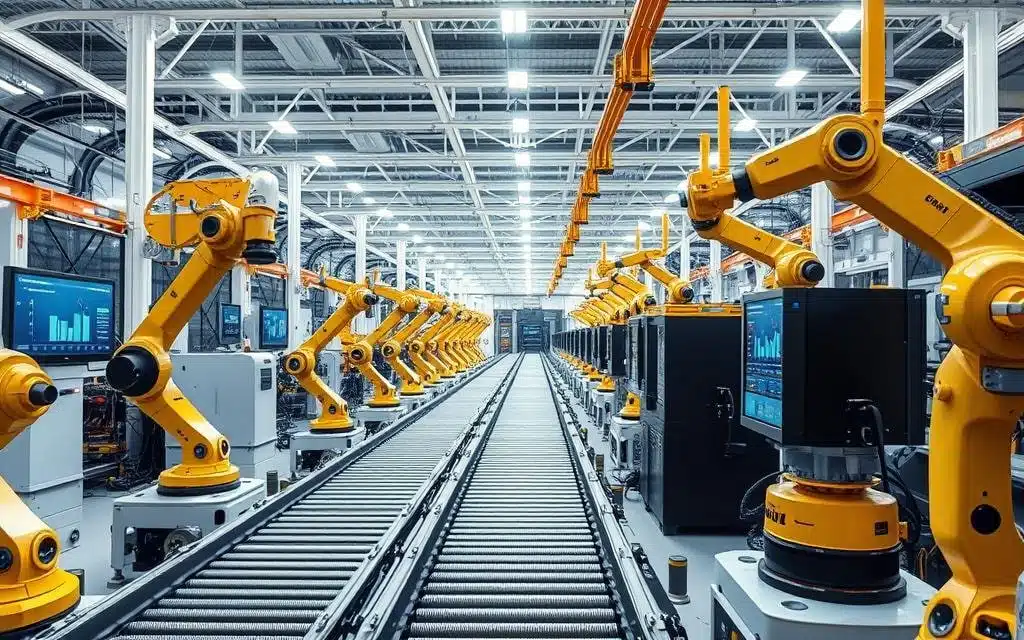
| Benefit | Automation Type | Impact |
|---|---|---|
| Reduced Operation Costs | Fixed, Programmable | Long-term savings |
| Enhanced Safety | Flexible | Less exposure to hazardous conditions |
| Increased Productivity | Fixed, Flexible | 24/7 operation capabilities |
| Improved Product Quality | Programmable, Flexible | Lower rate of human errors |
| Customer Satisfaction | Fixed | Timely order fulfillment |
The evolution of industry heavily relies on manufacturing automation for productivity and quality control. This technological adoption enables industries to enjoy comprehensive benefits of automation, influencing their growth and competitive stance in the market significantly.
Embracing Industry 4.0 Trends: Smart Factories and Beyond
As we dive into the forefront of Industry 4.0, smart factories stand as critical hubs for innovation and improved efficiency. The revolution is driven by key technologies such as IoT, predictive analytics, machine learning, and big data. These aren’t just trendy terms; they’re vital resources powering this significant change.
Integration of IoT & Cyber-Physical Systems
The fusion of the Internet of Things (IoT) and Cyber-Physical Systems (CPS) is vital. It allows for real-time digital and physical entity interactions within smart factories. IoT facilitates the autonomy of devices, enhancing productivity. Meanwhile, CPS ensures these interconnected systems operate flawlessly, backed by real-time data and analytics to guide manufacturing.
Artificial Intelligence: Predictive Analytics & Machine Learning
Artificial Intelligence is the backbone of Industry 4.0, steering crucial processes like predictive analytics and machine learning. These advancements are key to predicting maintenance needs and fine-tuning operations. This results in minimal downtime and heightened precision in manufacturing.
The Role of Big Data in Industry 4.0
In Industry 4.0, big data is foundational, enabling the analysis of vast data sets to identify patterns and trends. This includes insights related to human behavior and interactions. The data offers vital insights aiding in decision-making, making factories not only smarter but also more proactive in tackling issues.

| Technology | Application in Smart Factories | Impact on Industry 4.0 |
|---|---|---|
| IoT & CPS | Real-time data exchange and system monitoring | Enhances efficiency and productivity |
| AI & Machine Learning | Predictive maintenance and operation optimization | Reduces downtime, improves quality control |
| Big Data | Data-driven decision making and trend analysis | Optimizes manufacturing processes and reduces costs |
| Cloud Computing | Stores vast amounts of data, supports big data analytics | Provides the infrastructure for scalable data management |
| Additive Manufacturing | Customized solutions, reduced waste through 3D printing | Supports sustainable manufacturing practices |
| AR & VR | Used in training, maintenance, and design | Enhances operational efficiency and precision |
By adopting these groundbreaking technologies, smart factories are revolutionizing manufacturing. They’re setting new industry standards. The shift towards automation, data-driven decision-making, and continuous enhancement marks the path to fully realized smart manufacturing. This signifies a definitive move toward the principles of Industry 4.0.
User Interfaces in Automation: HMI & ICSS
In the realm of factory automation, integrating effective user interfaces is crucial. Interfaces such as Human-Machine Interfaces (HMI) and Integrated Control and Safety Systems (ICSS) stand out. These components connect human operators with complex processes. Our focus is on how HMI and ICSS not only enhance control but also enrich operator interactions with automated systems.
HMIs are crafted to display information visually, making it easier for operators to digest. Such interfaces enable efficient monitoring and control. They are praised for their ability to reduce cognitive strain and lower error rates. Research highlights that a unified user interface boosts operational efficiency greatly. For more on HMI development, visit the evolution of HMIs.
ICSS systems, however, blend control and safety measures seamlessly. They ensure safety concerns are addressed automatically, without hindering control operations. Their adoption underlines their strength in enhancing safety alongside maintaining operational efficacy. Discover the advantages of ICSS at Advantech’s insight on ICSS advantages.
| Feature | HMI | ICSS |
|---|---|---|
| Primary Function | Operator Interface | Integrated Control and Safety |
| Key Benefits | Usability, Efficiency | Safety, Automated Control |
| Industry Application | Manufacturing, Energy, Transportation | Energy, Water Treatment |
| Technology Used | Touch screens, AR/VR potential | Automated safety protocols, real-time control |
| Impact on Operation | Reduced errors, enhanced monitoring | Safety assurance, operational efficiency |
With tech progress in the factory automation sector, integrating HMIs and ICSS wisely is key. These interfaces not only ensure a safer, more productive setting but also boost operator capabilities, which is vital for success in industrial automation.
Industrial Automation Guide: Navigating the Technical Landscape
Understanding industrial automation’s complexity requires deep knowledge and strategic thinking. Leaders in this era work tirelessly to craft tailored automation solutions catered to distinct manufacturing needs. This ensures a seamless shift to automated operations.
Key Considerations for Implementing Automation Solutions
When considering industrial automation for your operations, evaluating several key factors is crucial. The technology choice—between programmable or flexible systems—determines scalability and adaptability. Deliberation on deployment costs and long-term operational effects is vital in our decision-making. Additionally, familiarizing oneself with automation’s broad capabilities through resources like understanding your options marks the first step in boosting productivity. Our commitment extends to ongoing process and system optimization, guaranteeing the achievement of their intended advantages.
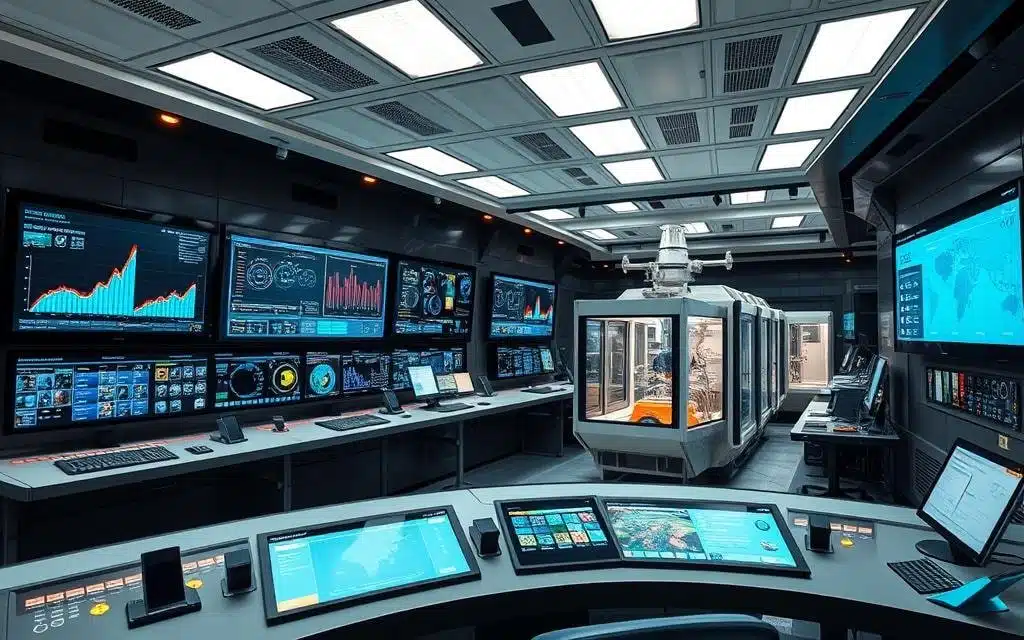
ROI Analysis & Project Development in Automation Projects
A rigorous ROI analysis is crucial for the success of industrial automation projects. This involves measuring potential financial returns against necessary investments. Such evaluation aids in understanding the feasibility and strategic benefit of automation initiatives. This not only aids immediate strategizing but also supports long-term planning regarding resources and budgeting.
Effective project planning incorporates a comprehensive strategy, addressing present needs while preparing for future adjustments. Exploring various project development strategies is essential for seamless automation system integration and operation.
Our exploration of the industrial automation guide highlights its potential to revolutionize multiple sectors. Through detailed ROI analysis and thoughtful project development, we guide businesses through automation’s complexities. This transforms challenges into opportunities for growth and progress.
Conclusion
Throughout our Industrial Automation Guide, we’ve dived deep into how automation reshapes manufacturing. We’ve covered everything from energy monitoring devices to process automation’s complex designs. We’ve seen the unity of components that forge intelligent factories. Across different levels, automation allows companies to manage operations, from food production to petrochemical plants.
In examining industrial controls’ networks, it’s clear how vital these systems are. They are the framework of modern factories, guiding materials to become final products. Technological advances, like PLC systems and robotic arms, enhance efficiency and precision. They spotlight automation’s role in cutting labor costs and improving maintenance through live tracking.
As we delve into Industry 4.0 trends, adopting automation becomes critical for lasting success. Our guide aims to highlight the spectrum of automation technologies and guide businesses toward these investments. Whether it involves applying RPA for office tasks or managing energy in large venues, using automation wisely is key. It drives industries towards a more productive, efficient, and sustainable future.
FAQ
What significant transformations does industrial automation bring to manufacturing?
Industrial automation drastically alters manufacturing by lessening manual labor dependency. It enhances productivity, efficiency, and offers cost savings. This is achieved through industrial robotics, PLC programming, and advanced control schemes. Consequently, smart factories emerge, embodying Industry 4.0’s essence. These factories redefine product design, creation, and distribution methods.
How does the integration of automation technology benefit modern manufacturing?
Automation technology boosts manufacturing by streamlining operations and elevating product quality. It minimizes downtime and escalates throughput, which enhances workplace safety too. Moreover, it ensures scalability and quick adaptation to market changes. This keeps companies competitive.
What are some successful case studies of automation integration in manufacturing?
Notable success stories of automation involve firms adeptly utilizing robotics, SCADA, and PLCs. They’ve fine-tuned production lines, curbed errors, and improved throughput and quality control. Such cases demonstrate automation’s vast potential in fostering significant cost efficiency and productivity leaps.
Can you give an overview of the different types of industrial control systems?
Industrial control systems vary from simple PLCs managing machinery to complex SCADA systems analyzing real-time data. DCS serve for intricate, continuous processes. These systems form the backbone of smart factories, ensuring pinpoint accuracy, efficiency, and flexibility in operations.
What roles do AGVs and AMRs play in the future of manufacturing automation?
AGVs and AMRs are pivotal in automation by enhancing material handling and logistics. They boost workflow efficiency and lower manual errors. These robots adapt to changing surroundings, elevating overall operational efficacy.
How critical is PLC programming in achieving factory automation?
PLC programming is vital, offering precise instructions for machinery operations. It automates production processes, ensures consistency, and enables real-time adaptation. Thus, it’s foundational for achieving automation efficiency.
In what ways does automated machinery give a competitive advantage?
Automated machinery boosts competitive edges by expanding production capacity and ensuring constant quality. It slashes operational costs and swiftly adapts to market demands. This results in a nimble, efficient manufacturing process.
What role does automated quality control play in manufacturing?
Automated quality control is crucial for upholding stringent quality benchmarks. It diminishes defect probabilities and human errors while utilizing advanced tech, like machine vision. This verifies product integrity throughout the production cycle.
How are smart factories integral to embracing Industry 4.0 trends?
Smart factories are central to Industry 4.0, leveraging IoT, artificial intelligence, and other advanced techs. They optimize production through connectivity and real-time data. This enhances decision-making and operational efficiency, aligning with proactive maintenance strategies.
What are the functions of HMI and ICSS in industrial automation?
HMIs and ICSS serve as the crucial interfaces between humans and machines. They grant operators intuitive control over automated processes. This ensures effective communication, easy access to vital system data, and heightened safety.
What key considerations should businesses evaluate when implementing industrial automation?
Businesses should weigh technology suitability, costs, workflow impacts, and expected ROI before automation. They must craft detailed project plans, choose suitable partners, and equip their workforce for technological integration.
Why is ROI analysis important in automation projects?
ROI analysis is crucial for measuring automation projects’ financial gains against investments. It aids in assessing cost-effectiveness and long-term benefits. This ensures that expenditures lead to notable productivity enhancements and cost reductions.


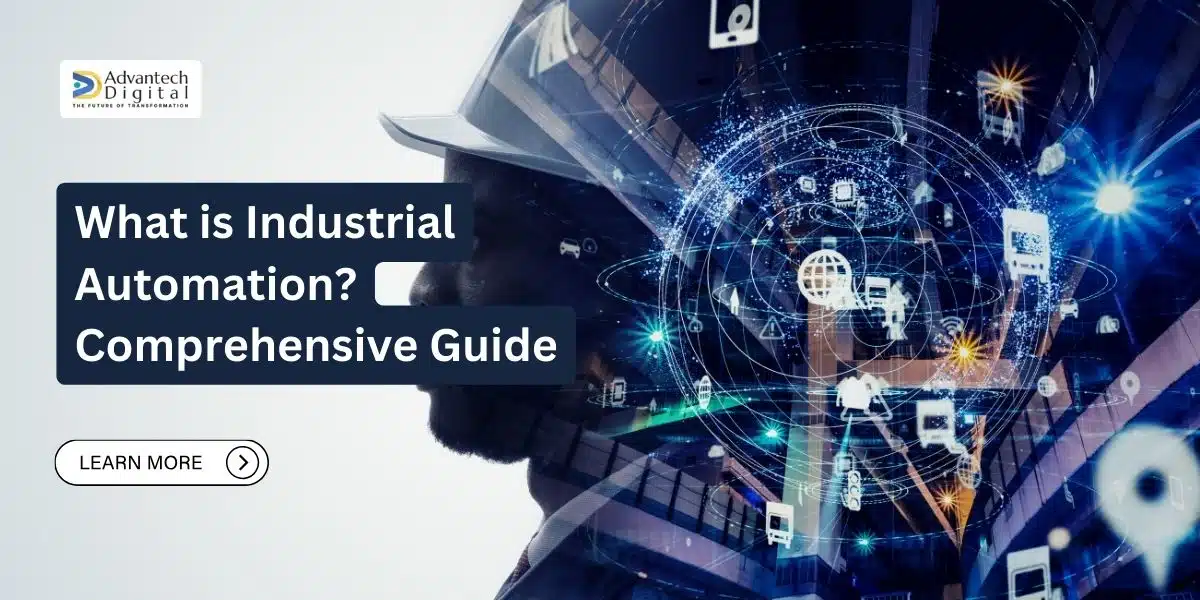





5 thoughts on “Industrial Automation Guide 101: A Must-have Guide in 2025”
Comments are closed.